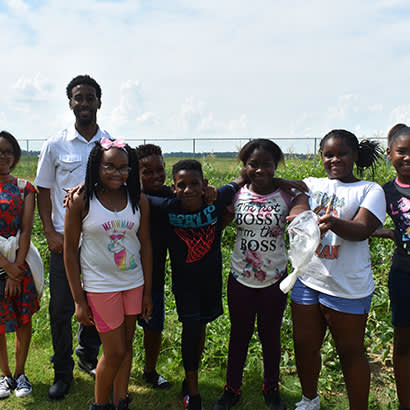
For an enhanced digital experience, read this story in the ezine.
Not a one-size-fits-all approach
In 2018, NRPA staff traveled to Tunica County, Mississippi, to learn more about county staff’s work supporting youth in healthy out-of-school time programs. But, this rural community in the heart of the Delta was doing so much more than offering summer programs. They were leveraging their community assets to ensure everyone — regardless of age — had access to social supports that enhanced their health and well-being. In short, they were organically operating as a Community Wellness Hub.
This wasn’t an isolated occurrence. Across the country, park and recreation agencies in communities of all sizes, rural and urban, have been operating as Community Wellness Hubs, which build on the existing strengths, assets and foundations of local park and recreation agencies. Community Wellness Hubs address the root causes of health and social inequities and promote health across multiple levels of intervention. They serve as essential infrastructure, leveraging partnerships and the resources, skills and knowledge of other sectors to integrate programs and services that advance equity, resilience, and health and well-being across seven interdependent and interconnected dimensions — cultural, economic, emotional, environmental, intellectual, physical and social.
Creating Community Wellness Hubs
Park and recreation professionals can transform a specific physical space into a Community Wellness Hub by providing an equitable and inclusive set of programs and services in one central location. They also can function as stewards of Community Wellness Hubs at a larger, system-wide level, shifting their agency mission, operations and practices to function in a more holistic, intentional and interconnected way while delivering services.
Unique hubs take shape when park and recreation professionals take action in key areas:
- Building Partnerships: Are any organizations, coalitions or partners already supporting community health efforts? If so, do you have a connection or relationship with them? Should you become a contributor to existing efforts? Are there any gaps, especially pertaining to those most impacted by health inequities?
- Assessing Community Needs: Are there clear, unmet needs that have been identified by the community? What issues and challenges affect health and well-being? What information, data sources, assessments, voices and perspectives are informing this?
- Centering Equity: Who leads conversations about the needs and priorities of underrepresented and historically disenfranchised groups in the community? What is your relationship with them? How can you build trust with those groups and partner with them or support their efforts authentically?
Brownsville, Texas
The City of Brownsville, Texas, has a population of 189,382. To address racial disparity in food access and nutrition literacy, the Brownsville Parks and Recreation Department (PARD) leads community efforts to provide free dietician-led nutrition education classes, assist with data collection to build the case for continued support of nutrition programs, promote meal programs and nutrition education classes, and distribute food.
PARD partners with Brownsville Independent School District’s Seamless Summer Option Meal Program to provide meals at three recreation centers in under-resourced communities. The Brownsville Wellness Coalition is helping to design a community garden in Gonzalez Park, as well as host Saturday programs to engage families in recreation, nutrition, gardening, and health and wellness. Community Wellness Hub partners also have worked together on a pop-up farmers market promoting local healthy food.
To center the community’s voice in the implementation of their Community Wellness Hub, PARD partnered with Las Imaginistas, a female-led art collective that empowers residents through artistic expression and legislative change. Together, they are working with the City of Brownsville and local community members conducting community interviews, which yielded feedback based on two perceived challenges:
- Local legislation did not address the real economic or cultural needs of the community.
- The voices of historically disenfranchised groups were being systematically excluded from decision-making processes.
To address these frustrations, the Community Wellness Hub is taking a systemic-change approach, looking at current policies and piloting food access strategies that target both cultural and economic health.
New London, Connecticut
The City of New London, Connecticut, has a population of 27,980. To ensure all voices in the community were represented in the planning of a new Community Wellness Hub, the New London Recreation District (NLRD) actively solicited 22 community organizations that were a diverse representation of the community to join a broad community assessment, which will be used to develop a programming plan for the new Community Wellness Hub.
To support this work, NLRD hired two part-time coordinators to recruit organizations and take them through the process of hosting focus groups. Organizers determined that focus group discussions would center on gathering community feedback on programs, resources available, food and nutrition opportunities, and cultural development. Using the feedback, staff synthesized themes, asked follow-up questions and developed a program plan that ensured community members felt heard and saw themselves reflected in the new space.
Developing a Hub to Meet Your Community’s Needs
Centering the three key areas of building partnerships, assessing community needs and centering equity upfront will help determine next steps for creating a Community Wellness Hub, defining your agency’s role in advancing health solutions and combating social inequities within your community. For more strategies on developing a Community Wellness Hub, click here.
Maureen Neumann is Senior Program Manager at NRPA.

